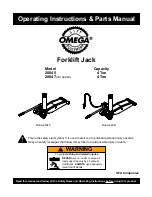
40
STEL s.r.l. – Via del Progresso n° 59 – 36020
Loc. Castegnero (VICENZA) - ITALY
TEL. +39 444 639525 (central.) – +39 444 639682 (comm.)
FAX +39 444 639641 – E-mail: stel @ stelgroup.it
http: www.stelgroup.it
MAX dp 171-201C
COD. 6910700020
are basic electrodes for alternating current. Basic coatings are very greedy for humid-
ity, so they must be kept in a dry place, in well closed boxes.
It must also be remembered that steels with a carbon content of more than 0.6% must
be welded with special electrodes.
- Cellulose coatings. These are electrodes that weld with direct current, connected to
the positive pole; they are essentially used for welding pipes, on account of the viscos-
ity of the pool and the high degree of penetration. They need generators with suitable
properties.
6.2- ELECTRODE WELDING PHASES (MMA)
- Preparatory phase:
a) Preparation of the edges to be welded.
The preparation of the edges varies according to the thickness of the material to be
welded, the welding position, the type of joint and the working requirements. However,
it is always advisable to work on clean parts, free from oxide, or without rust or other
substances that could damage the weld.
The edges can be prepared with “U” section calking for a weld without rewelding; with
“X” section calking when rewelding of the reverse weld is needed.
- Table for preparing “U” shaped edges
b) Choosing the electrode.
- The choice of the electrode diameter depends on the thickness of the material, the
type of joint and the welding position.
When welds in “position” are needed, the pool tends to slip due to gravity, so it is rec-
ommended to use electrodes with a small diameter, making a series of passes. For
electrodes with a large diameter, high welding currents are needed, which provide suf-
ficient heat energy.
c) Setting the welding current.
- The current stability of the generator allows working at low values and in particularly
difficult conditions
.
The following table indicates the minimum and maximum current that may be used for
welding on carbon steel.
However, normally the data for welding with the various types of electrode are pro-
vided by the manufacturer
.
-
Lighting the arc:
The electric arc is lit by rubbing the tip of the electrode on the part that is to be
ENGLISH
TECHNICAL DESCRIP-
109
MAX dp 171-201C
COD. 6910700020
STEL s.r.l. – Via del Progresso n° 59 – 36020
Loc. Castegnero (VICENZA) - ITALY
TEL. +39 444 639525 (central.) – +39 444 639682 (comm.)
FAX +39 444 639641 – E-mail: stel @ stelgroup.it
http: www.stelgroup.it
11.3- AUSSETZZYKLUS (ED) UND ÜBERTEMPERATUR
Unter Aussetzzyklus versteht man den Prozentsatz von 10 Minuten, den der Bediener
beim Schweißen aussetzen muss, um keine Übertemperatur zu verursachen.
Wenn die Maschine auf Übertemperatur übergeht, beginnt die gelbe Led (Bez. 3, Seite 8)
zu leuchten.
Daraufhin ist es erforderlich, 10 Minuten abzuwarten, bevor man das Schweißen wieder
aufnimmt.
Nach der Wiederaufnahme des Schweißen ist es erforderlich, den Schweißstrom oder
den Arbeitszyklus zu vermindern.
DEUTSCH
ABBILDUNGEN
10 Minuten
kontinuierliches Schweißen
100 % ED (Aussetzzyklus)
3,5 Minuten Schweißen
10 Minuten
6,5 Minuten Wartezeit
10 Minuten
35 % ED (Aussetzzyklus)
Содержание MAX dp 171C
Страница 152: ......
















































